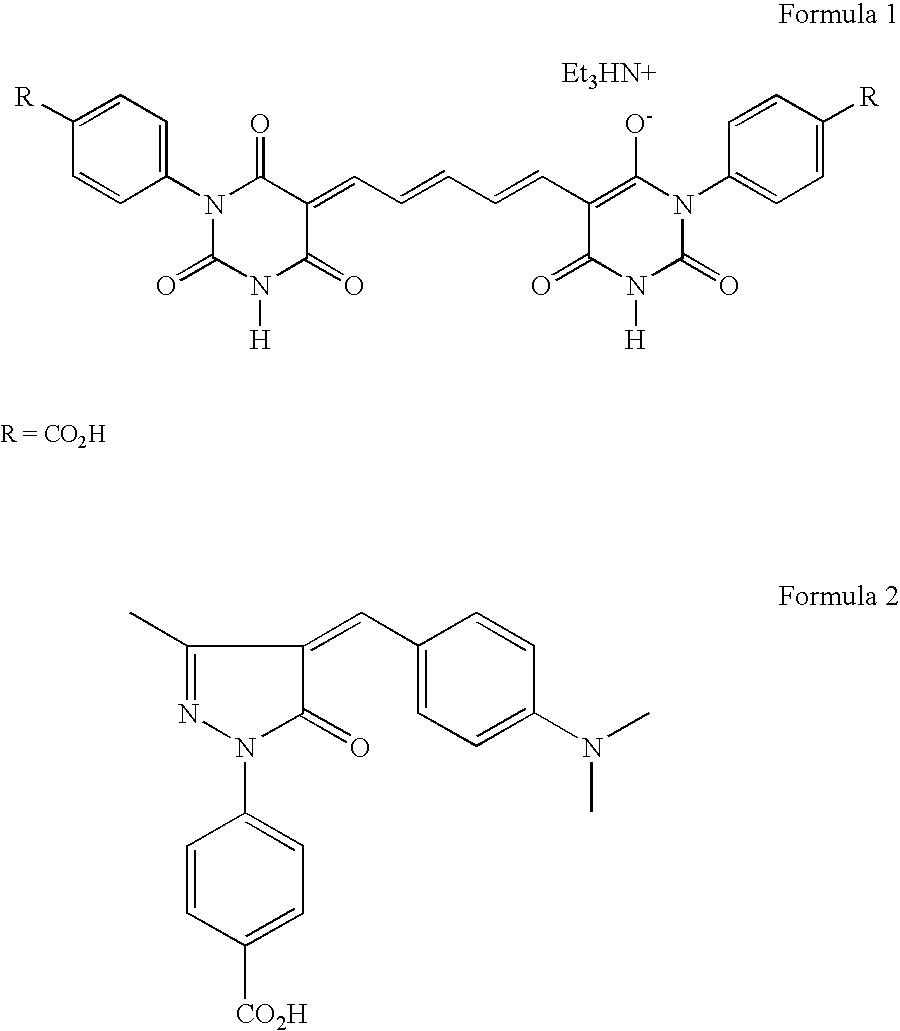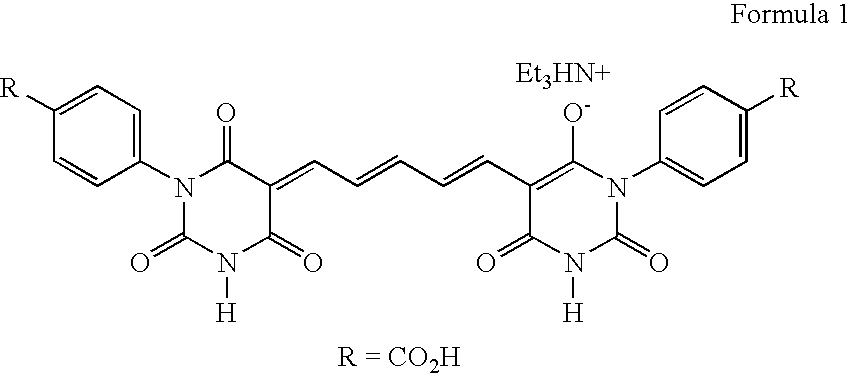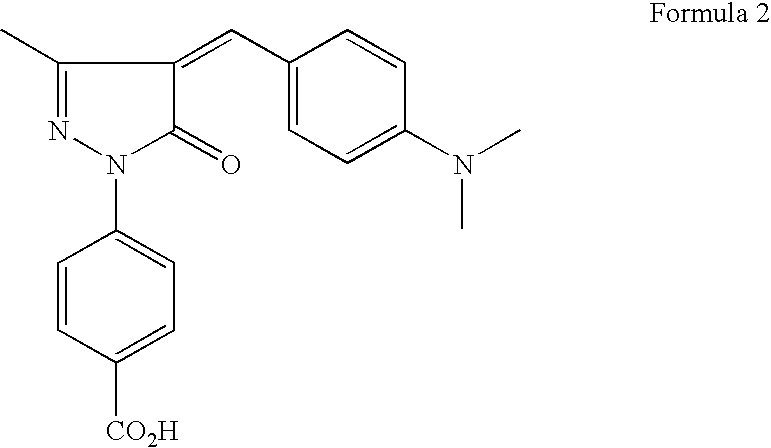Photographic element
a technology of photoelectric elements and elements, applied in the field of photoelectric elements, can solve the problems of high manufacturing cost and dimensional instability, and achieve the effects of maintaining anti-halation properties, good anti-halation properties, and low mass per square meter
- Summary
- Abstract
- Description
- Claims
- Application Information
AI Technical Summary
Benefits of technology
Problems solved by technology
Method used
Image
Examples
example 1
[0047]An antihalation underlayer was prepared for a red-sensitive PCB film
[0048]To deionised water (3666.4 g) was added a dry bone gelatin (10.0 g) manufactured by Nitta Gelatin Inc. The gel was allowed to swell at 25° C. for 20 minutes before being melted, with stirring, at 40° C. The pH was adjusted to 5.1±0.05. A solution (8.0 ml) of Aerosol OT® surfactant (13.33 g in 1 kg) was added, so that the surfactant solution represented 0.2% w / w of the final coating solution. Then a dye dispersion (110.0 g) was added: the dye had a structure of formula 1 and was 10% w / w in water.
[0049]
[0050]Finally, deionised water was added so as to bring the coating solution weight up to 4000.0 g. The solution was coated conventionally by a slide hopper technique on to polyethylene terephthalate film support at a wet coverage of 40 ml / m2, so as to deliver dry coverages of 100 mg gelatin / m2 and 110 mg dye / m2.
example 2
[0051]An antihalation underlayer was prepared for a blue-sensitive PCB film
[0052]To deionised water (3666.4 g) was added a dry bone gelatin (10.0 g) manufactured by Nitta Gelatin Inc. The gel was allowed to swell at 25° C. for 20 minutes before being melted, with stirring, at 40° C. The pH was adjusted to 5.1±0.05. A solution (8.0 ml) of Aerosol OT® surfactant (13.33 g in 1 kg) was added, so that the surfactant solution represented 0.2% w / w of the final coating solution. Then a dye dispersion (107.6 g) was added: the dye had structure of Formula 2 and was 10% w / w in water.
[0053]
[0054]Finally, deionised water was added so as to bring the coating solution weight up to 4000.0 g. The solution was coated conventionally by a slide hopper technique on to polyethylene terephthalate film support at a wet coverage of 40 ml / m2, so as to deliver dry coverages of 100 mg gelatin / m2 and 107.6 mg dye / m2.
[0055]In both examples, suitable light sensitive photographic emulsion layers could then be coat...
PUM
| Property | Measurement | Unit |
|---|---|---|
| RH | aaaaa | aaaaa |
| RH | aaaaa | aaaaa |
| viscosity | aaaaa | aaaaa |
Abstract
Description
Claims
Application Information
 Login to View More
Login to View More - R&D
- Intellectual Property
- Life Sciences
- Materials
- Tech Scout
- Unparalleled Data Quality
- Higher Quality Content
- 60% Fewer Hallucinations
Browse by: Latest US Patents, China's latest patents, Technical Efficacy Thesaurus, Application Domain, Technology Topic, Popular Technical Reports.
© 2025 PatSnap. All rights reserved.Legal|Privacy policy|Modern Slavery Act Transparency Statement|Sitemap|About US| Contact US: help@patsnap.com



